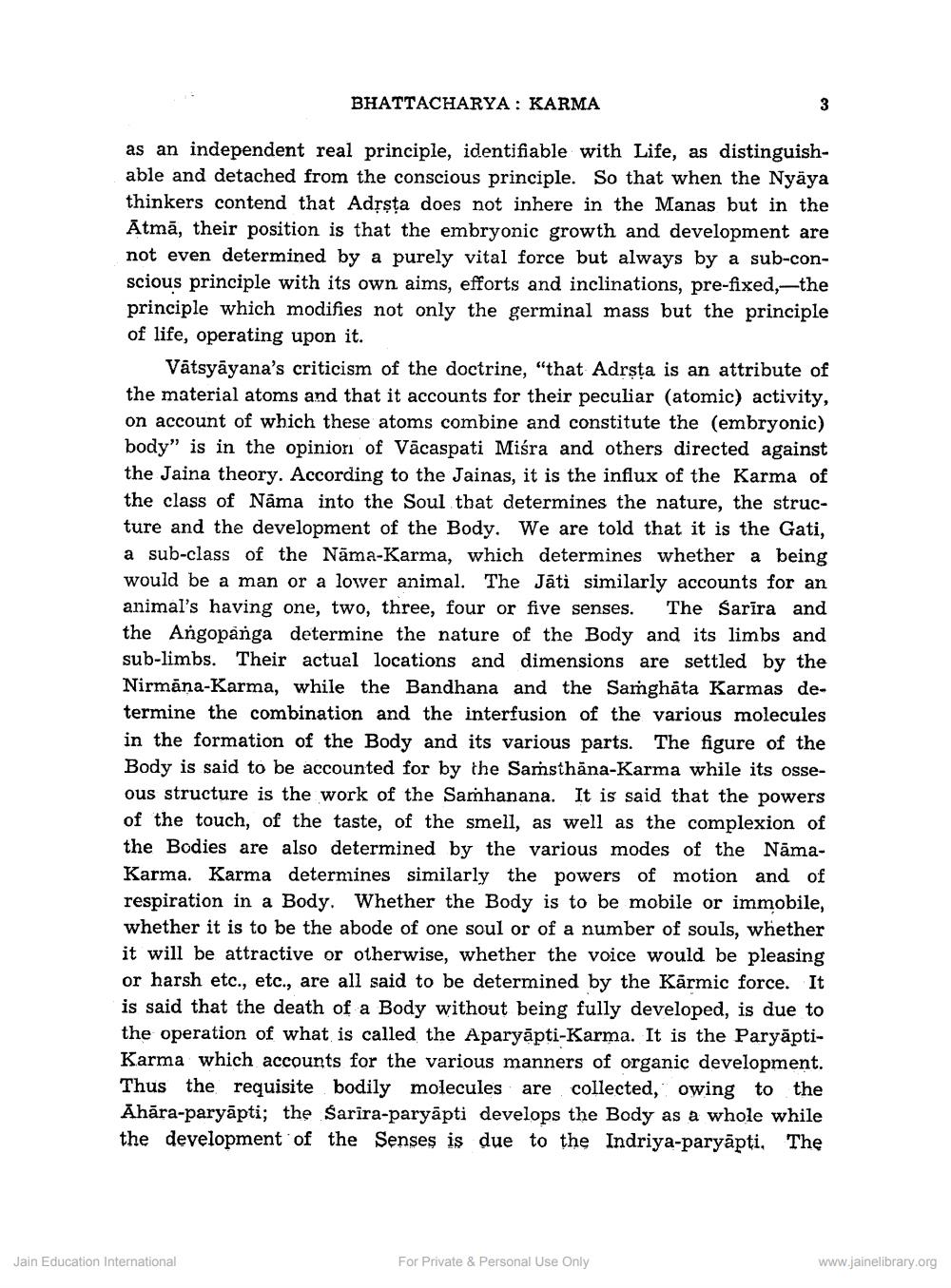Book Title: Structural Evolution and the Doctrine of Karma Author(s): Harisatya Bhattacharya Publisher: Z_Vijay_Vallabh_suri_Smarak_Granth_012060.pdf View full book textPage 3
________________ BHATTACHARYA : KARMA as an independent real principle, identifiable with Life, as distinguishable and detached from the conscious principle. So that when the Nyaya thinkers contend that AdȚsta does not inhere in the Manas but in the Atmā, their position is that the embryonic growth and development are not even determined by a purely vital force but always by a sub-conscious principle with its own aims, efforts and inclinations, pre-fixed,—the principle which modifies not only the germinal mass but the principle of life, operating upon it. Vātsyāyana's criticism of the doctrine, "that Adrsta is an attribute of the material atoms and that it accounts for their peculiar (atomic) activity, on account of which these atoms combine and constitute the (embryonic) body" is in the opinion of Vācaspati Miśra and others directed against the Jaina theory. According to the Jainas, it is the influx of the Karma of the class of Nāma into the Soul that determines the nature, the structure and the development of the Body. We are told that it is the Gati, a sub-class of the Nāma-Karma, which determines whether a being would be a man or a lower animal. The Jāti similarly accounts for an animal's having one, two, three, four or five senses. The Sarira and the Angopanga determine the nature of the Body and its limbs and sub-limbs. Their actual locations and dimensions are settled by the Nirmāna-Karma, while the Bandhana and the Sanghata Karmas determine the combination and the interfusion of the various molecules in the formation of the Body and its various parts. The figure of the Body is said to be accounted for by the Samsthāna-Karma while its osseous structure is the work of the Samhanana. It is said that the powers of the touch, of the taste, of the smell, as well as the complexion of the Bodies are also determined by the various modes of the NāmaKarma. Karma determines similarly the powers of motion and of respiration in a Body. Whether the Body is to be mobile or immobile, whether it is to be the abode of one soul or of a number of souls, whether it will be attractive or otherwise, whether the voice would be pleasing or harsh etc., etc., are all said to be determined by the Kārmic force. It is said that the death of a Body without being fully developed, is due to the operation of what is called the Aparyāpti-Karma. It is the ParyāptiKarma which accounts for the various manners of organic development. Thus the requisite bodily molecules are collected, owing to the Ahāra-paryāpti; the Sarira-paryāpti develops the Body as a whole while the development of the Senses is due to the Indriya-paryapti, The Jain Education International For Private & Personal Use Only www.jainelibrary.orgPage Navigation
1 2 3 4 5 6
